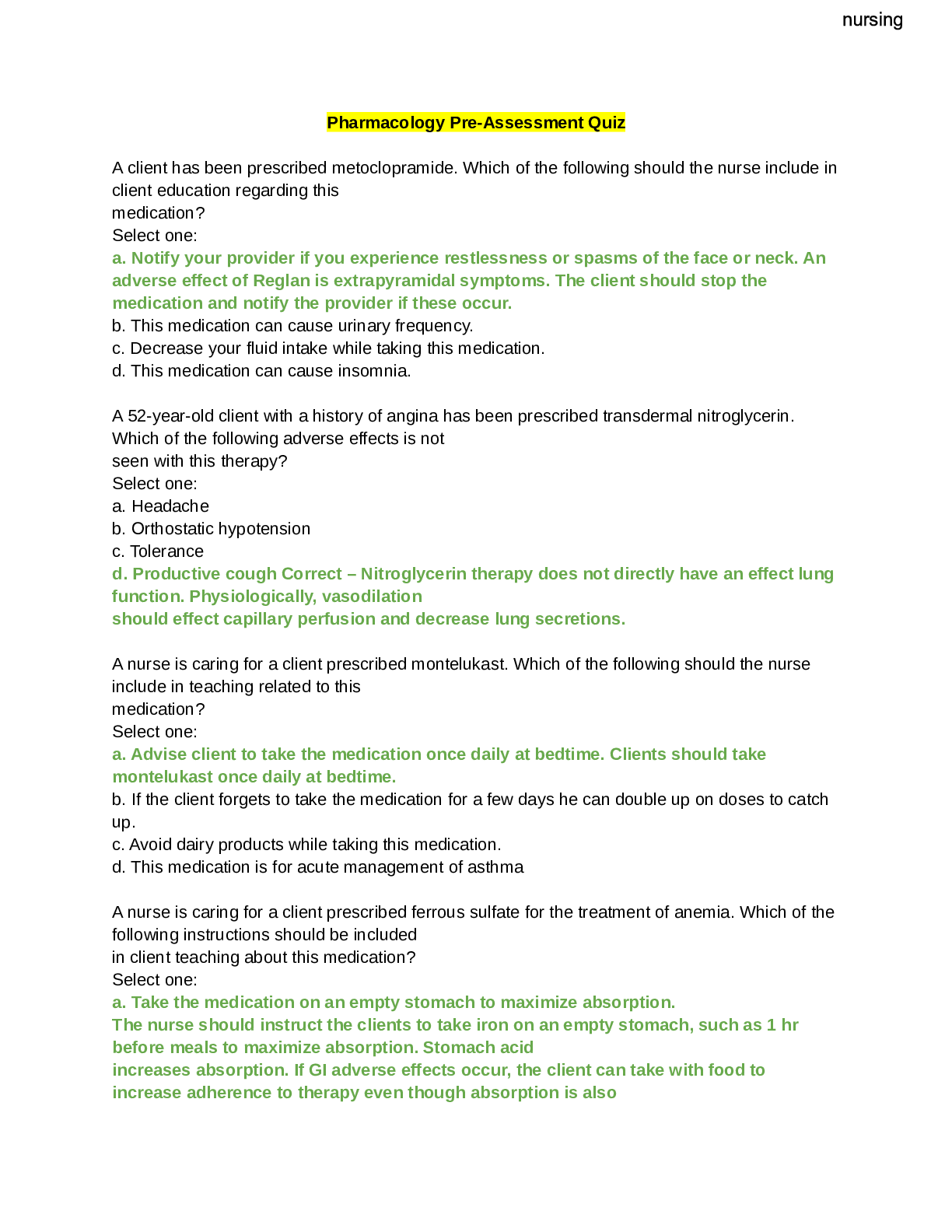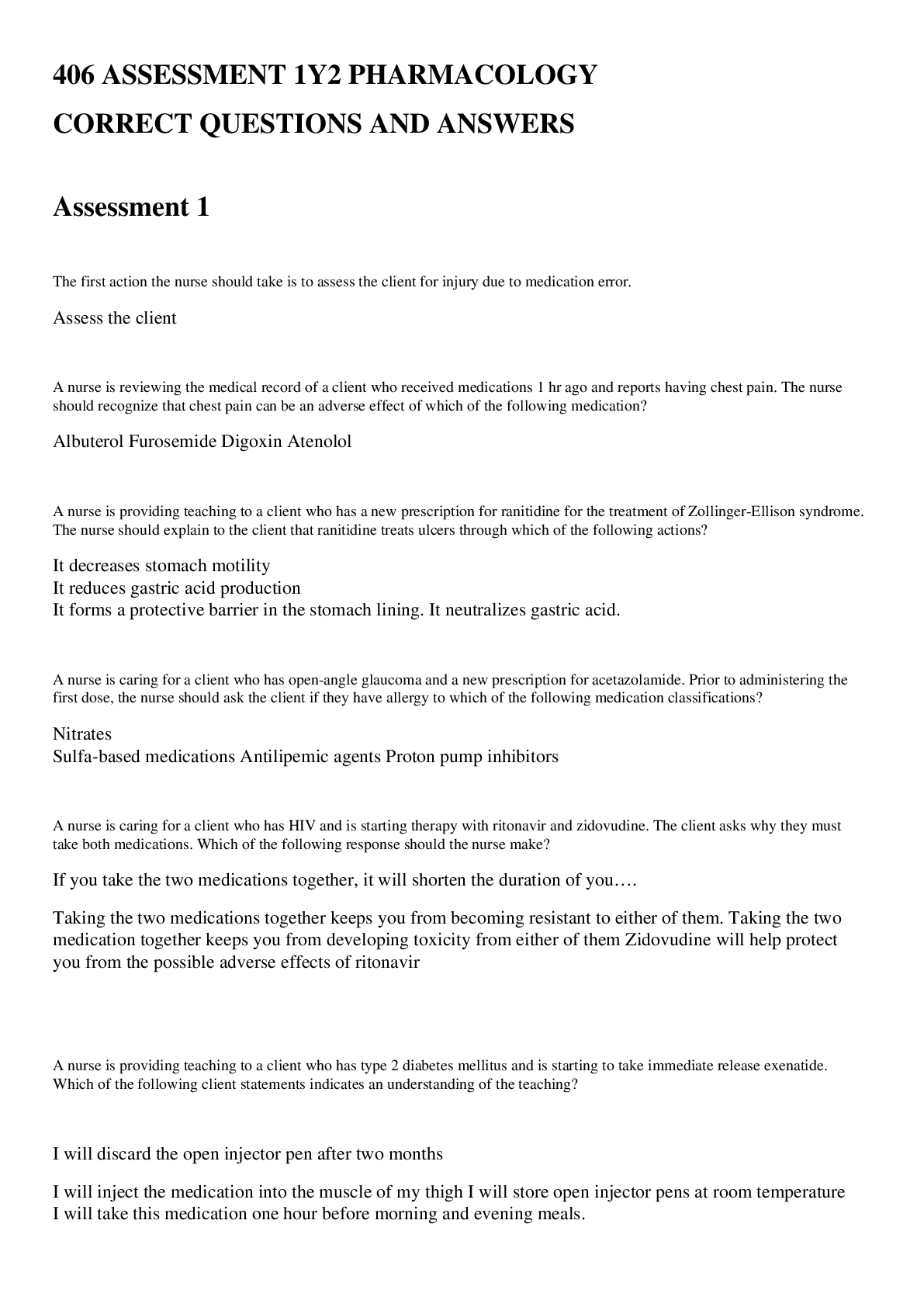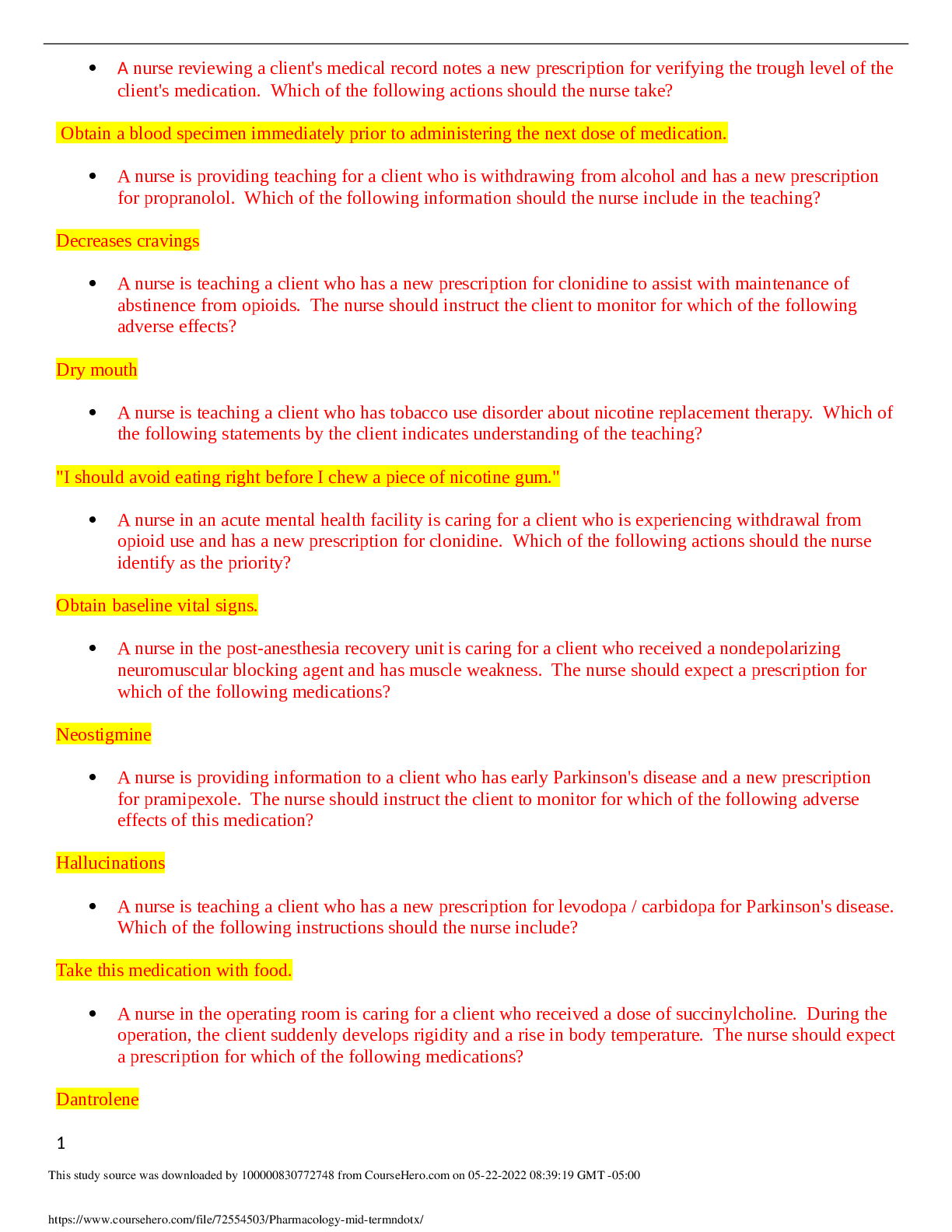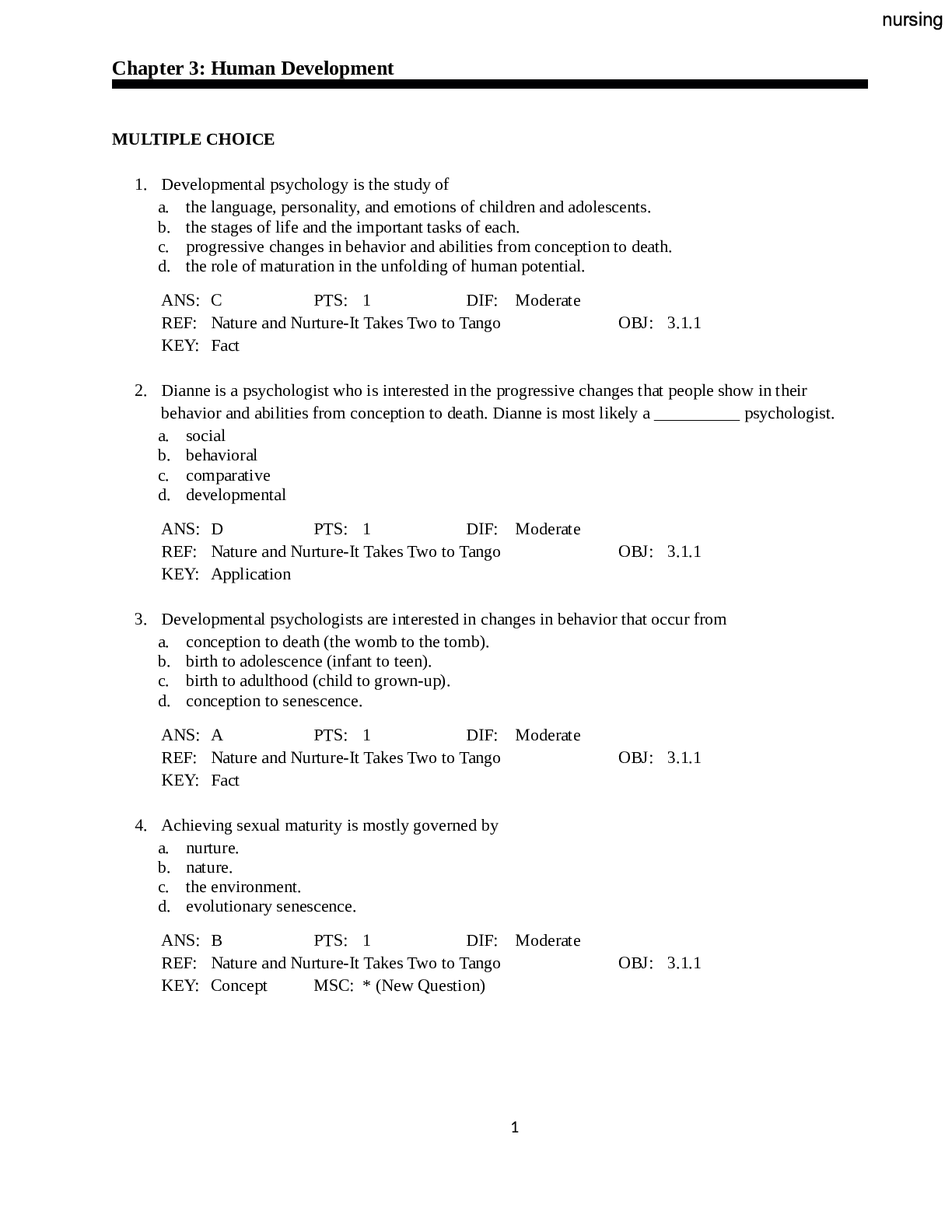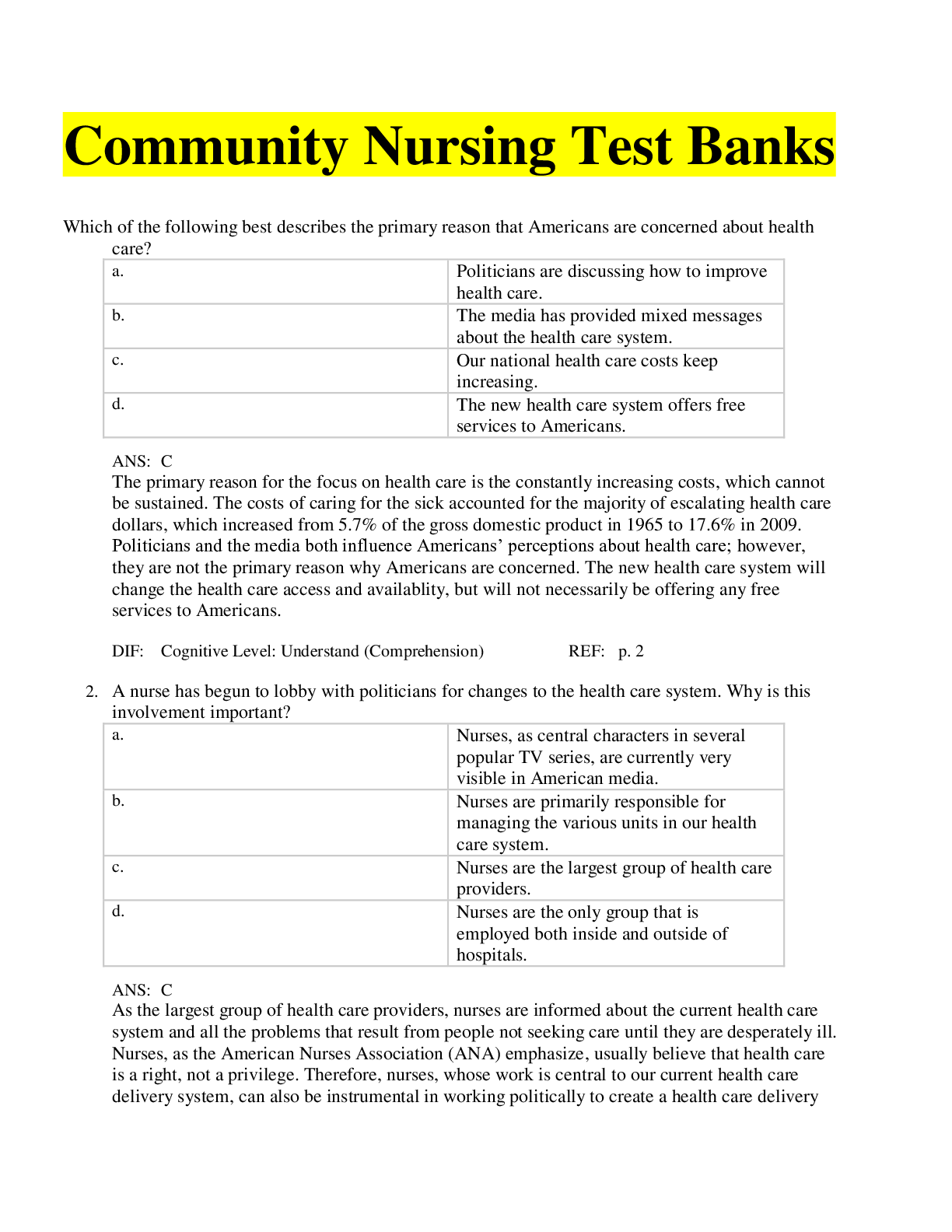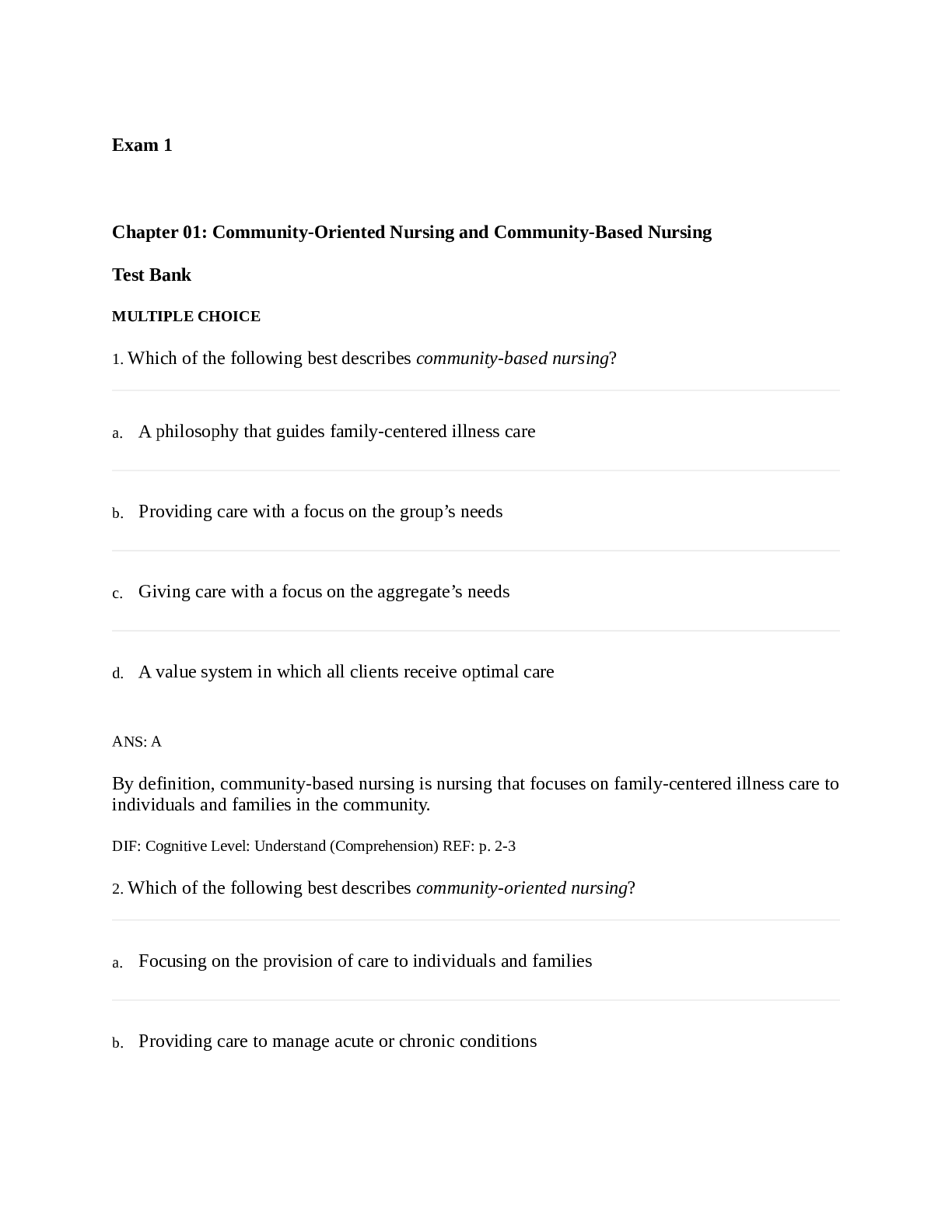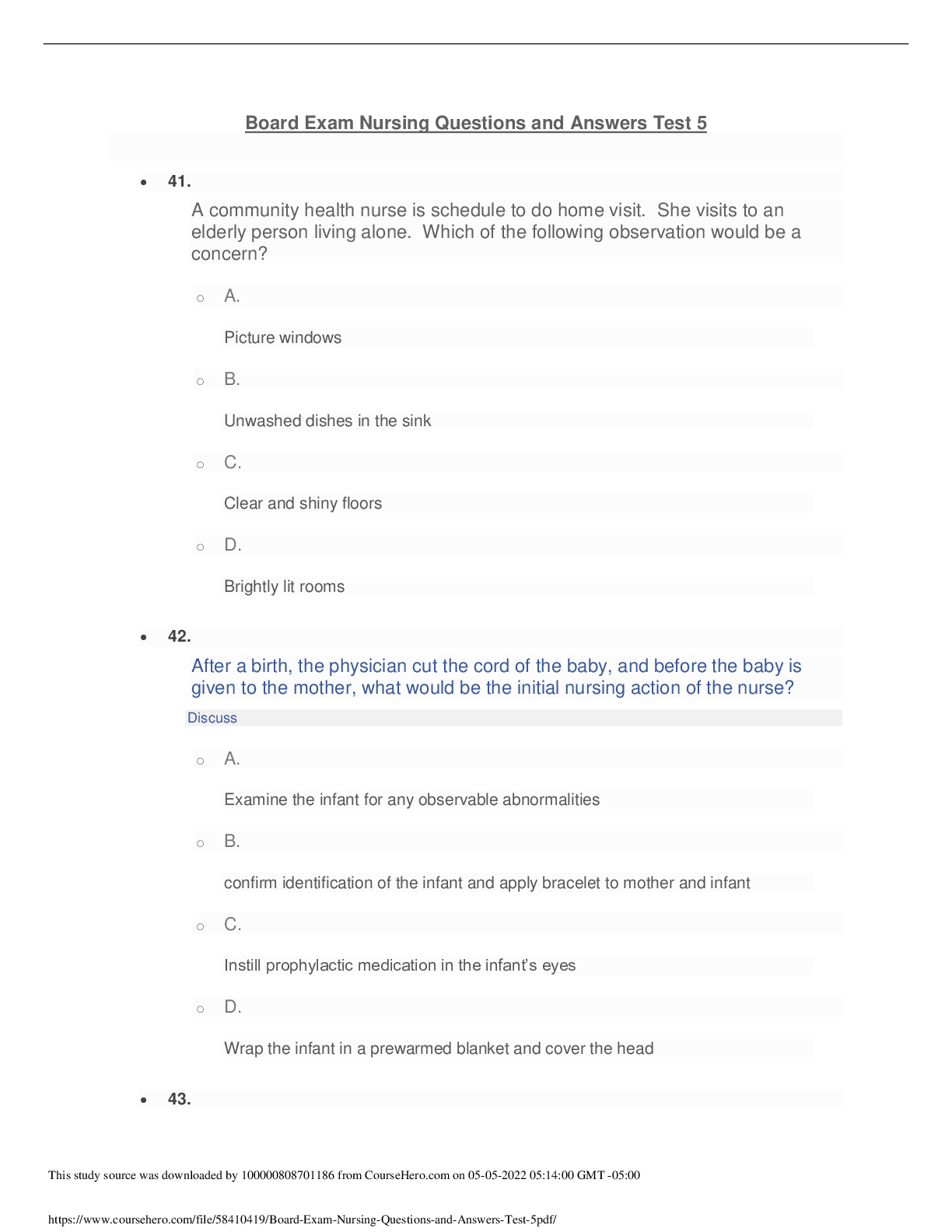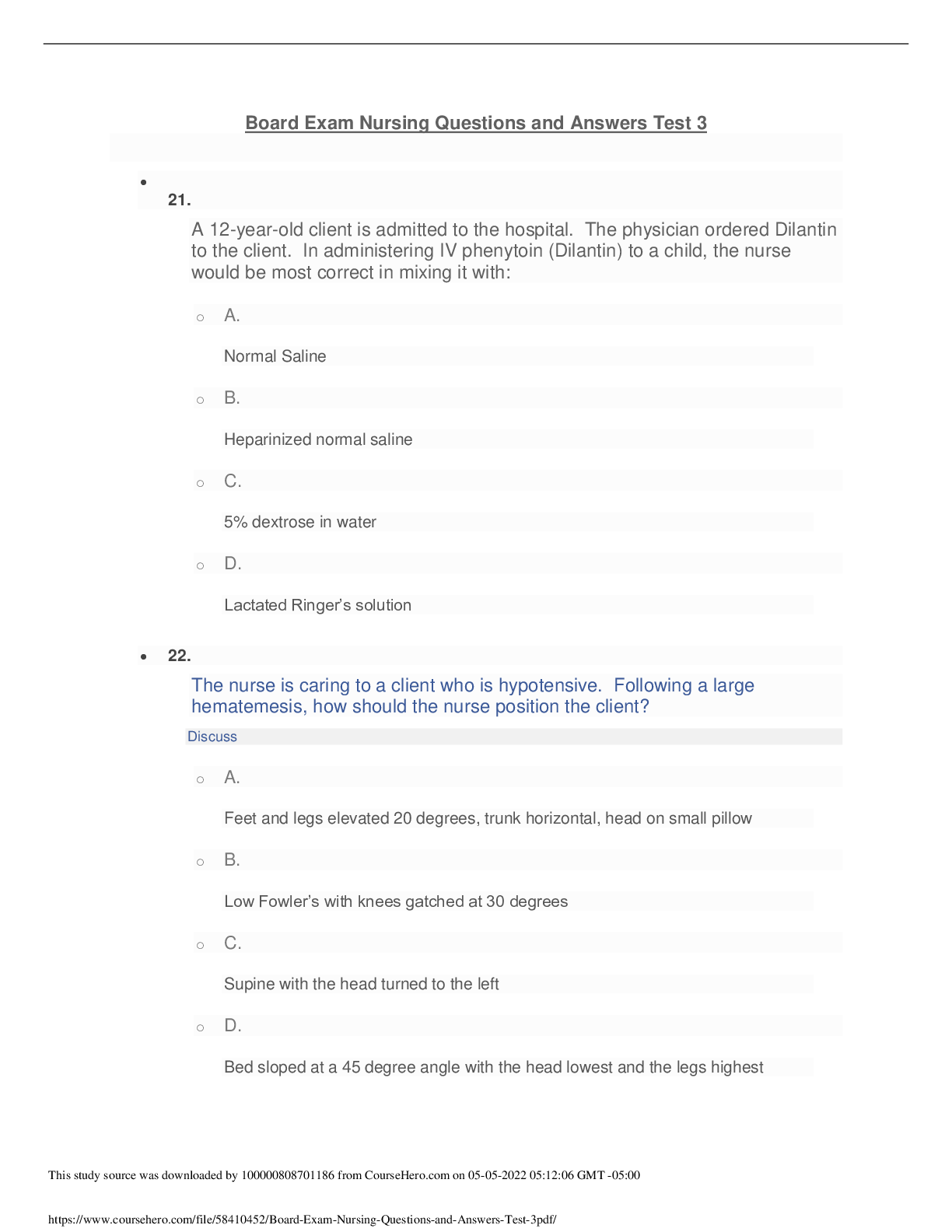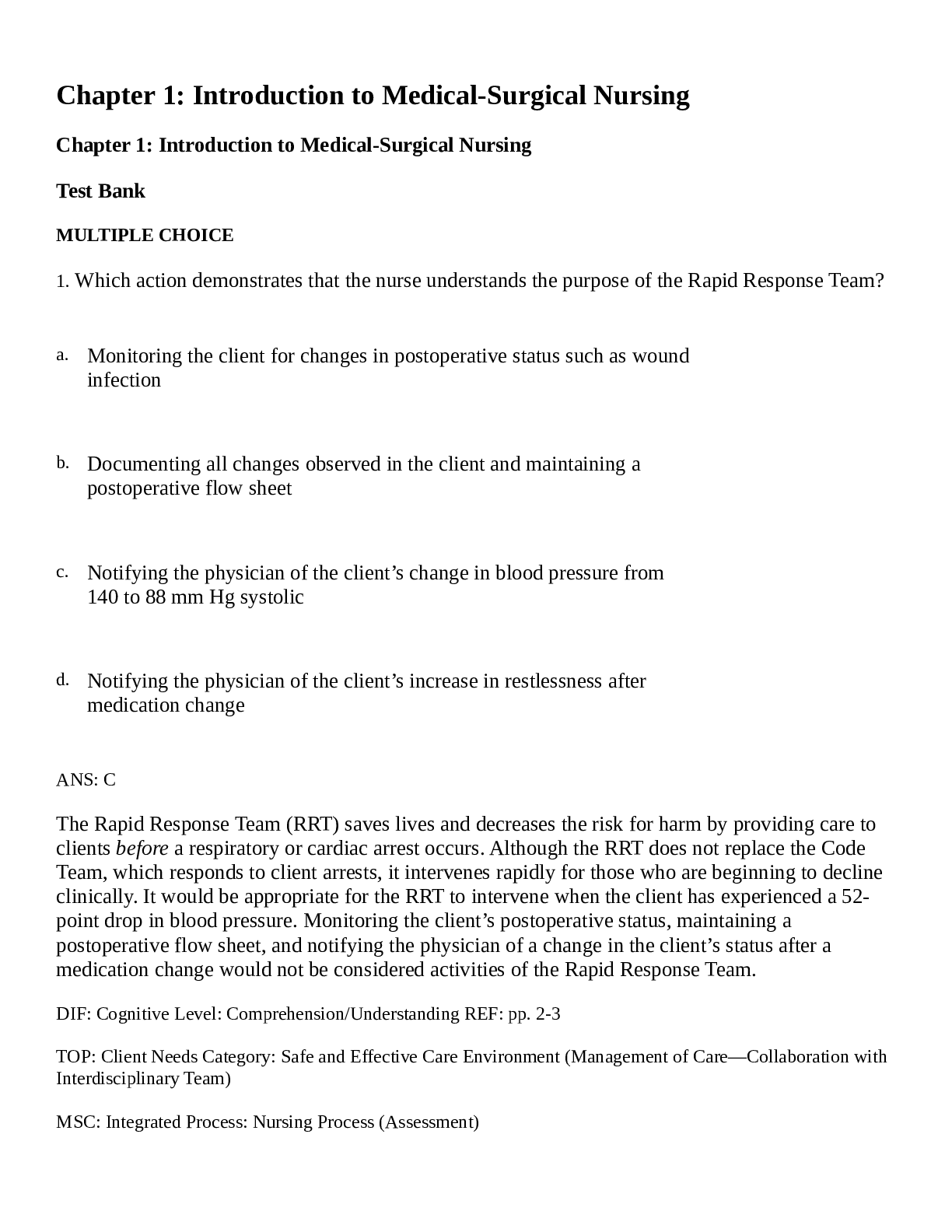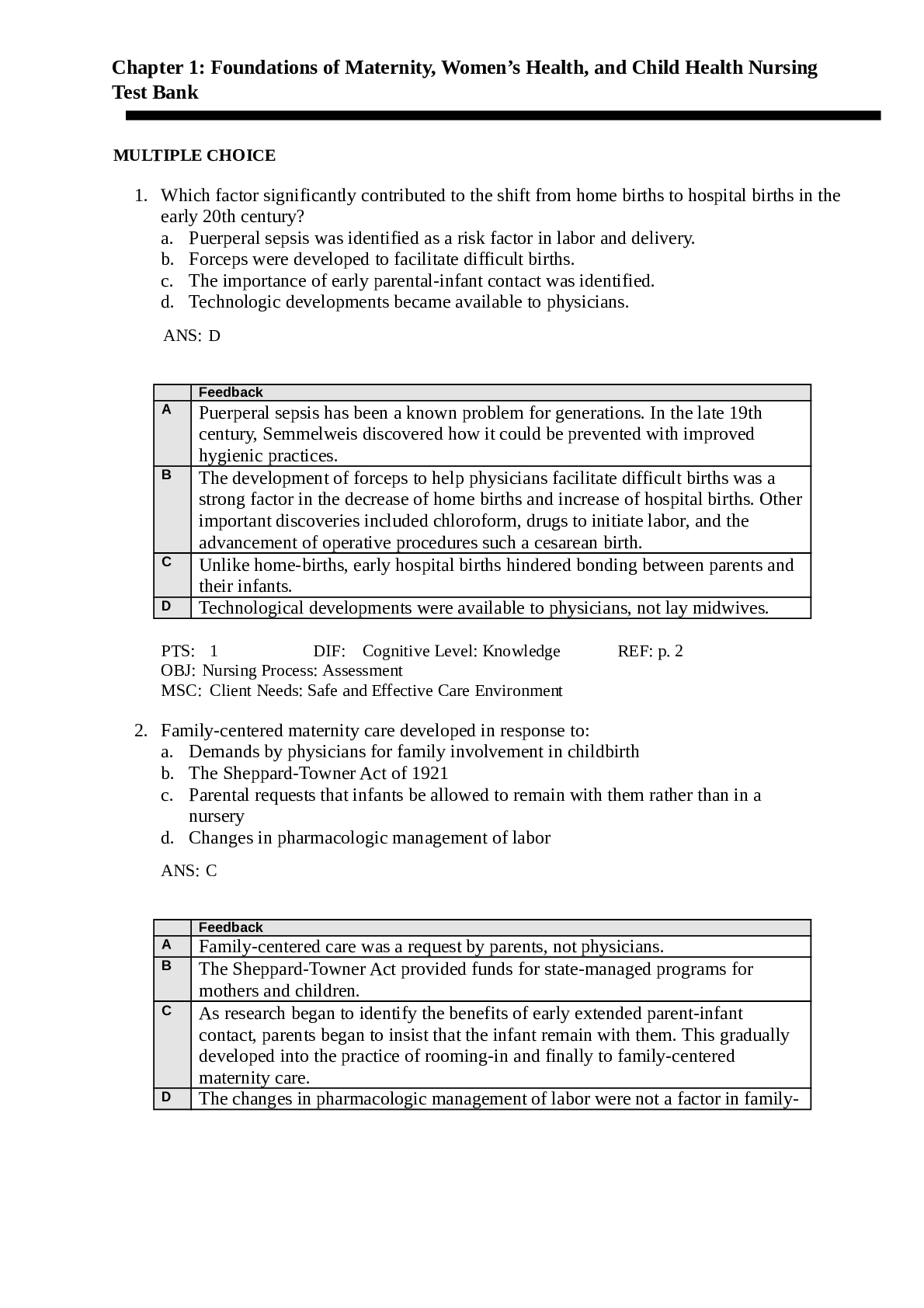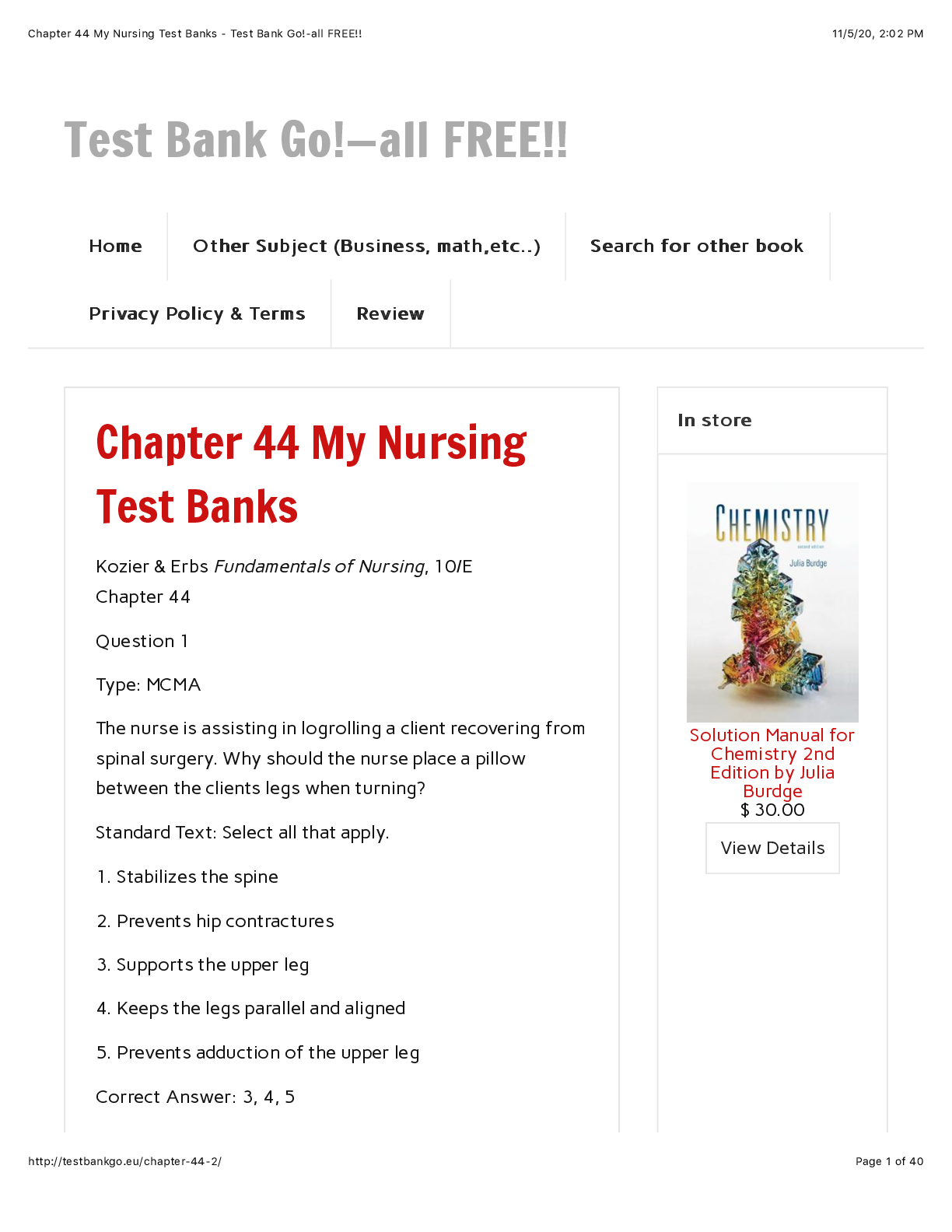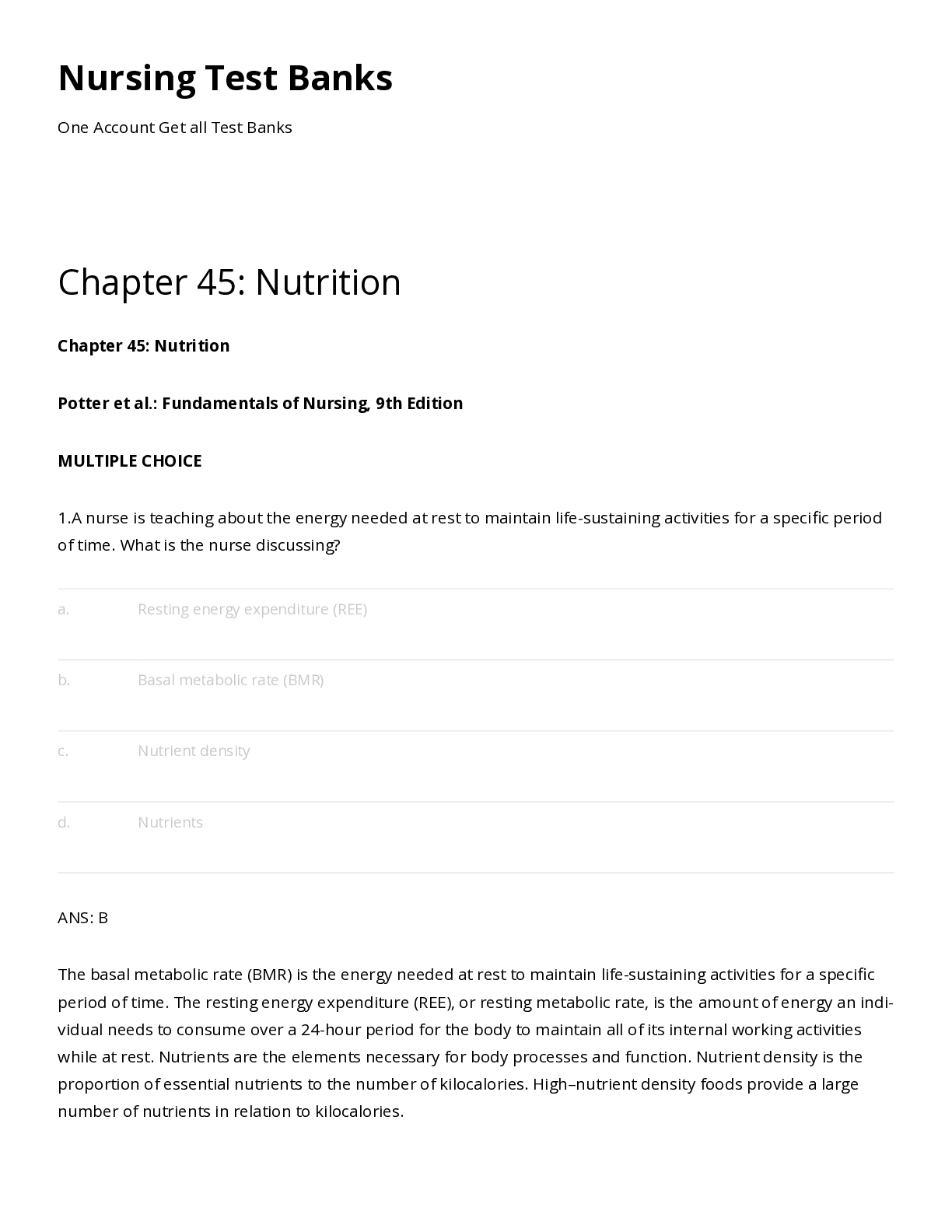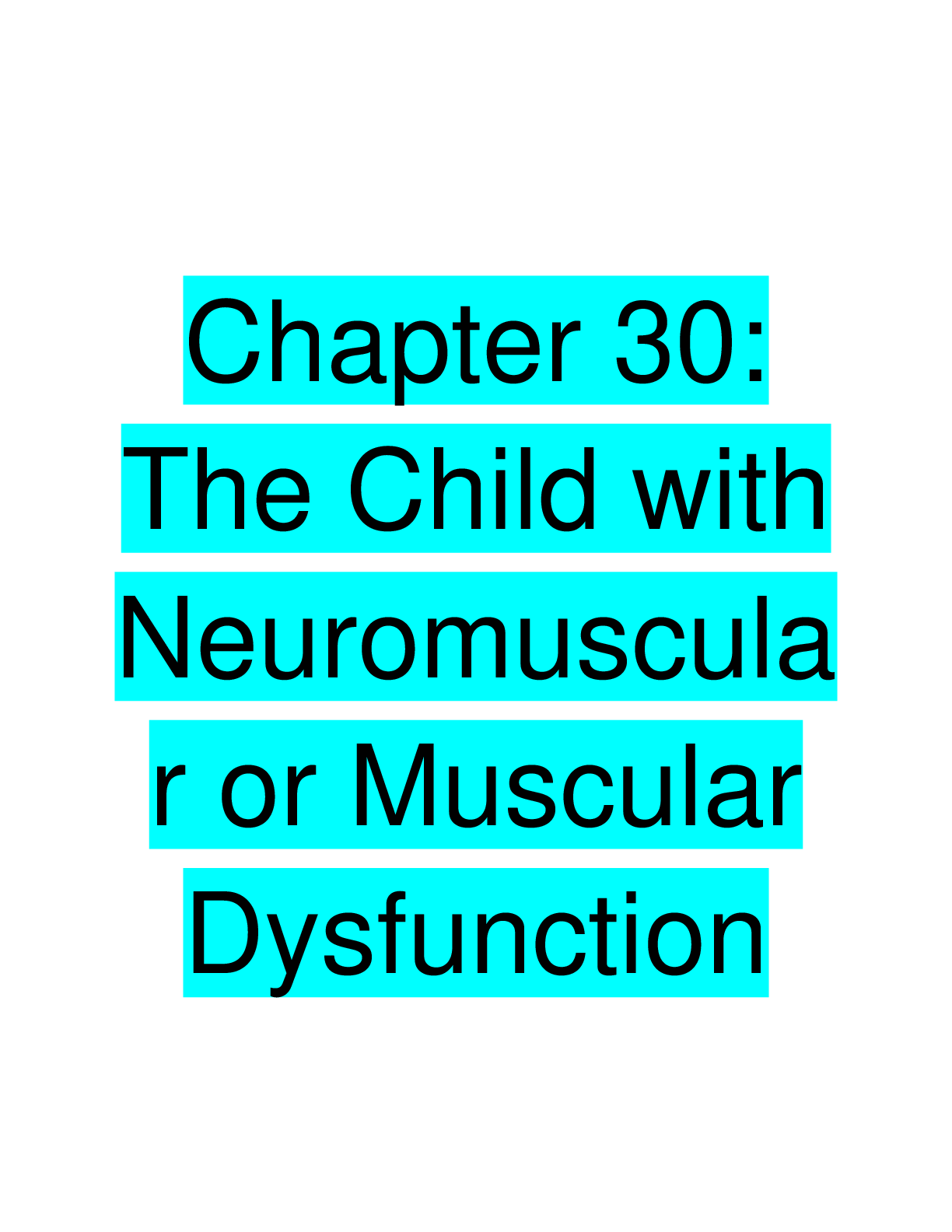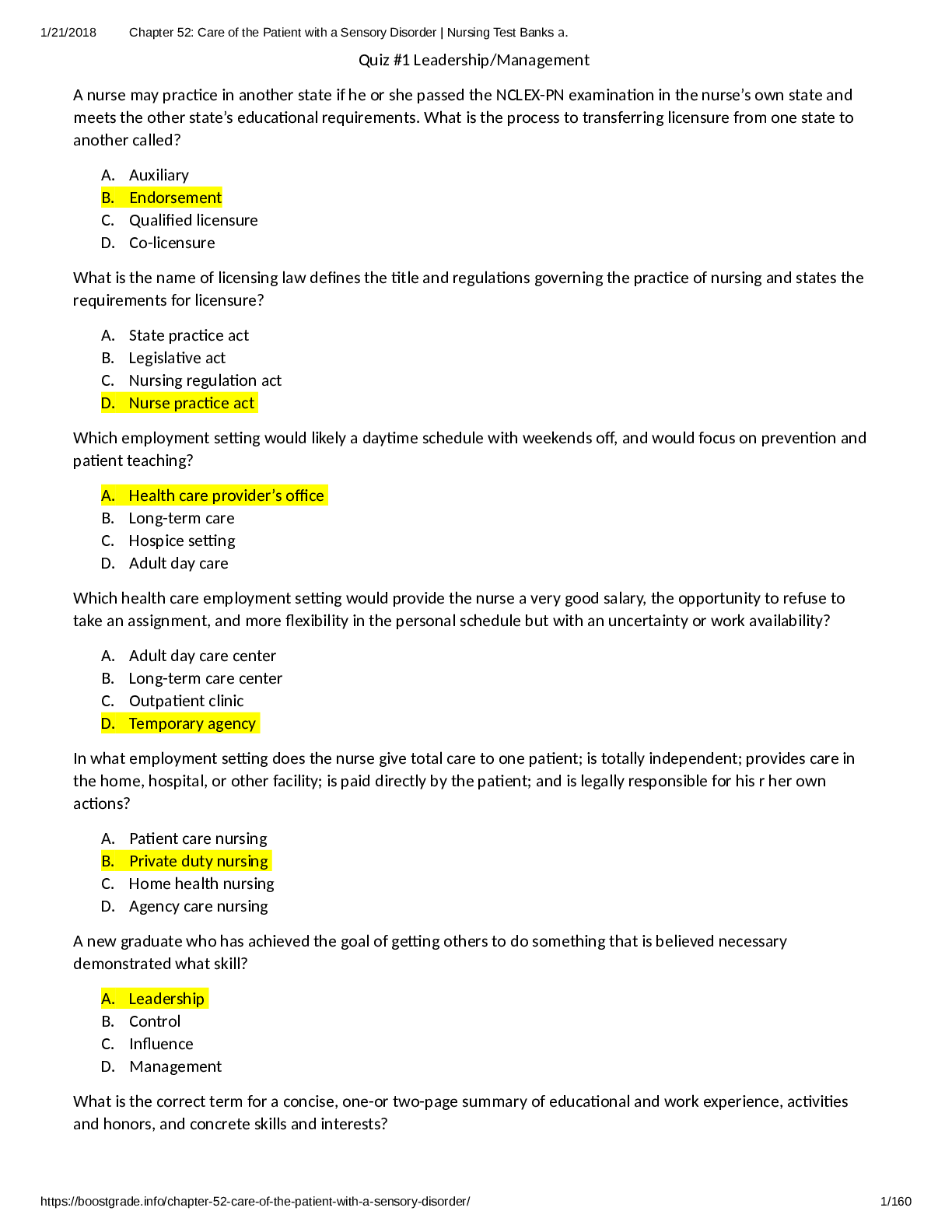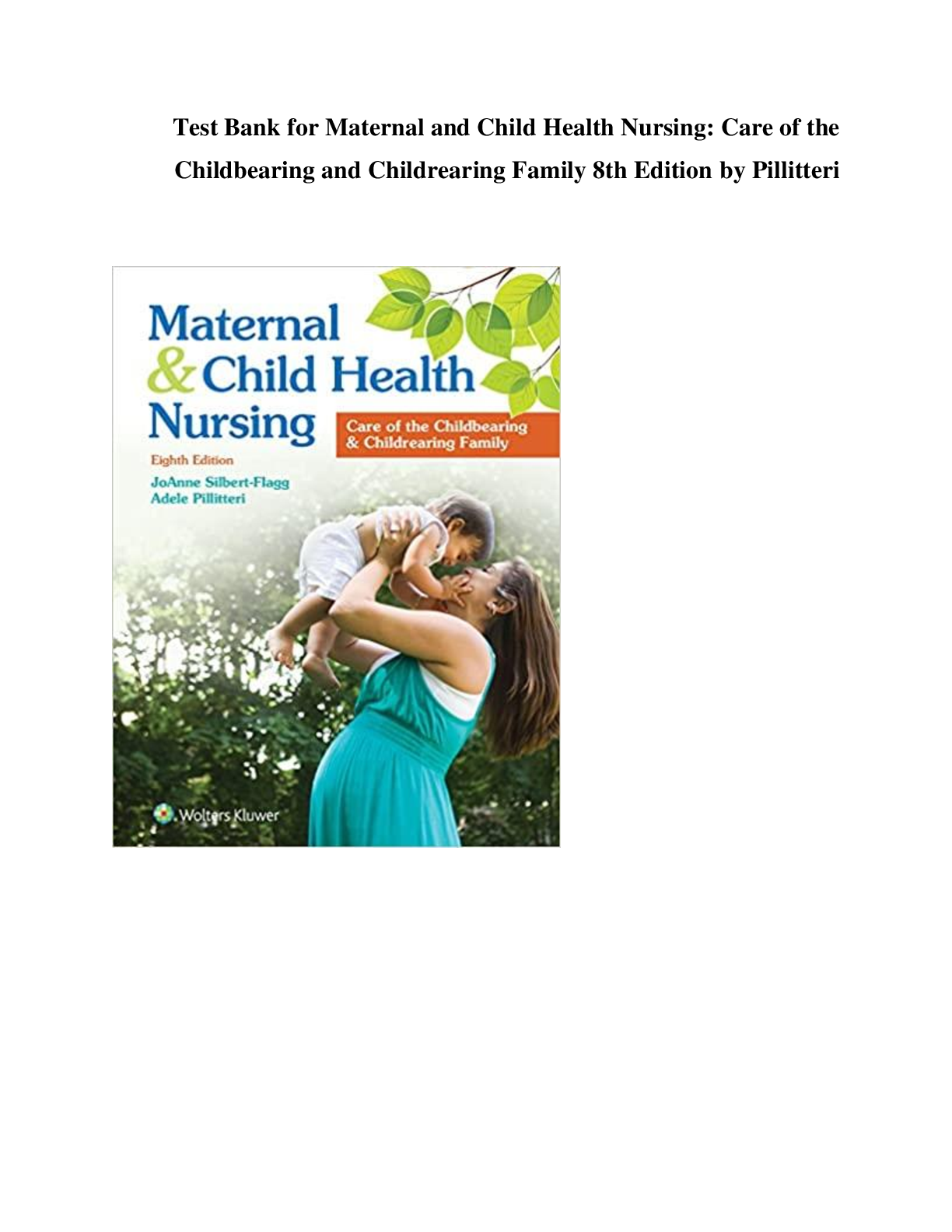Health Care > QUESTIONS & ANSWERS > Foundations of Maternity, Women’s Health, and Child Health Nursing Test Bank (All)
Foundations of Maternity, Women’s Health, and Child Health Nursing Test Bank
Document Content and Description Below
Which factor significantly contributed to the shift from home births to hospital births in the early 20th century? a. Puerperal sepsis was identified as a risk factor in labor and delivery. b. Forc... eps were developed to facilitate difficult births. c. The importance of early parental-infant contact was identified. d. Technologic developments became available to physicians. ANS: D Feedback A Puerperal sepsis has been a known problem for generations. In the late 19th century, Semmelweis discovered how it could be prevented with improved hygienic practices. B The development of forceps to help physicians facilitate difficult births was a strong factor in the decrease of home births and increase of hospital births. Other important discoveries included chloroform, drugs to initiate labor, and the advancement of operative procedures such a cesarean birth. C Unlike home-births, early hospital births hindered bonding between parents and their infants. D Technological developments were available to physicians, not lay midwives. PTS: 1 DIF: Cognitive Level: Knowledge REF: p. 2 OBJ: Nursing Process: Assessment MSC: Client Needs: Safe and Effective Care Environment 2. Family-centered maternity care developed in response to: a. Demands by physicians for family involvement in childbirth b. The Sheppard-Towner Act of 1921 c. Parental requests that infants be allowed to remain with them rather than in a nursery d. Changes in pharmacologic management of labor ANS: C Feedback A Family-centered care was a request by parents, not physicians. B The Sheppard-Towner Act provided funds for state-managed programs for mothers and children. C As research began to identify the benefits of early extended parent-infant contact, parents began to insist that the infant remain with them. This gradually developed into the practice of rooming-in and finally to family-centered maternity care. D The changes in pharmacologic management of labor were not a factor in family- centered maternity care. PTS: 1 DIF: Cognitive Level: Knowledge REF: p. 3 OBJ: Nursing Process: Assessment MSC: Client Needs: Psychosocial Integrity 3. Which setting for childbirth allows the least amount of parent-infant contact? a. Labor/delivery/recovery/postpartum room b. Birth center c. Traditional hospital birth d. Home birth ANS: C Feedback A The labor/delivery/recovery/postpartum room setting allows increased parentinfant contact. B Birth centers are set up to allow an increase in parent-infant contact. C In the traditional hospital setting, the mother may see the infant for only short feeding periods, and the infant is cared for in a separate nursery. D Home births allow an increase in parent-infant contact. PTS: 1 DIF: Cognitive Level: Knowledge REF: p. 3 OBJ: Nursing Process: Planning MSC: Client Needs: Health Promotion and Maintenance 4. As a result of changes in health care delivery and funding, a current trend seen in the pediatric setting is: a. Increased hospitalization of children b. Decreased number of children living in poverty c. An increase in ambulatory care d. Decreased use of managed care ANS: C Feedback A Hospitalization for children has decreased. B Health care delivery has not altered the number of children living in poverty. C One effect of managed care has been that pediatric health care delivery has shifted dramatically from the acute care setting to the ambulatory setting. One of the biggest changes in health care has been the growth of managed care. The number of hospital beds being used has decreased as more care is given in outpatient settings and in the home. The number of children living in poverty has increased over the last decade. D Managed care has increased in order to control cost. PTS: 1 DIF: Cognitive Level: Knowledge REF: p. 6 OBJ: Nursing Process: Planning MSC: Client Needs: Safe and Effective Care Environment 5. The Women, Infants, and Children (WIC) program provides: a. Well-child examinations for infants and children living at the poverty level b. Immunizations for high-risk infants and children c. Screening for infants with developmental disorders d. Supplemental food supplies to low-income women who are pregnant or breastfeeding ANS: D Feedback A Medicaid’s Early and Periodic Screening, Diagnosis, and Treatment Program provides for well-child examinations and for treatment of any medical problems diagnosed during such checkups. B Children in the WIC program are often linked with immunizations, but that is not the primary focus of the program. C Public Law 99-457 provides financial incentives to states to establish comprehensive early intervention services for infants and toddlers with, or at risk for, developmental disabilities. D WIC is a federal program that provides supplemental food supplies to lowincome women who are pregnant or breastfeeding and to their children until age 5 years. PTS: 1 DIF: Cognitive Level: Comprehension REF: p. 2 | Tables 1-1, 1-9 OBJ: Nursing Process: Assessment MSC: Client Needs: Physiologic Integrity 6. In most states, adolescents who are not emancipated minors must have the permission of their parents before: a. Treatment for drug abuse b. Treatment for sexually transmitted diseases (STDs) c. Accessing birth control d. Surgery ANS: D Feedback A Most states allow minors to obtain treatment for drug or alcohol abuse without parental consent. B Most states allow minors to obtain treatment for STDs without parental consent. C In most states, minors are allowed access to birth control without parental consent. D If a minor receives surgery without proper informed consent, assault and battery charges against the care provider can result. This does not apply to an emancipated minor (a minor child who has the legal competency of an adult because of circumstances involving marriage, divorce, parenting of a child, living independently without parents, or enlistment in the armed services). PTS: 1 DIF: Cognitive Level: Application REF: p. 19 OBJ: Nursing Process: Planning MSC: Client Needs: Safe and Effective Care Environment 7. The maternity nurse should have a clear understanding of the correct use of a clinical pathway. One characteristic of clinical pathways is that they: a. Are developed and implemented by nurses b. Are used primarily in the pediatric setting c. Set specific time lines for sequencing interventions d. Are part of the nursing process ANS: C Feedback A Clinical pathways are developed by multiple health care professionals and reflect interdisciplinary interventions. B They are used in multiple settings and for patients throughout the life span. C Clinical pathways measure outcomes of patient care. Each pathway outlines specific time lines for sequencing interventions. D The steps of the nursing process are assessment, diagnosis, planning, intervention, and evaluation. PTS: 1 DIF: Cognitive Level: Application REF: p. 8 OBJ: Nursing Process: Planning MSC: Client Needs: Safe and Effective Care Environment 8. The fastest-growing group of homeless people is: a. Men and women preparing for retirement b. Migrant workers c. Single women and their children d. Intravenous (IV) substance abusers ANS: C Feedback A Most people contemplating retirement have made provisions. B Migrant workers may seek health care only when absolutely necessary; however, not all are homeless. C Pregnancy and birth, especially for a teenager, are important contributing factors for becoming homeless. D Not all substance abusers are homeless. PTS: 1 DIF: Cognitive Level: Knowledge REF: p. 16 OBJ: Nursing Process: Assessment MSC: Client Needs: Physiologic Integrity 9. The United States ranks 25th in infant mortality rates of the world. Which factor has a significant impact on decreasing the mortality rate of infants? a. Resolving all language and cultural differences b. Enrolling the pregnant woman in the Medicaid program by the 8th month of pregnancy c. Ensuring early and adequate prenatal care d. Providing more women’s shelters ANS: C Feedback A Language and cultural differences are not infant mortality issues but must be addressed to improve overall health care. B Medicaid provides health care for poor pregnant women, but the process may take weeks to take effect. The 8th month is too late to apply and receive benefits for this pregnancy. C Because preterm infants form the largest category of those needing expensive intensive care, early pregnancy intervention is essential for decreasing infant mortality rates. This is especially important for women in high-risk groups, such as racial minorities, teenagers, and those living in poverty. D The women in shelters have the same difficulties in obtaining health care as do other poor people, particularly lack of transportation and inconvenient hours of the clinics. PTS: 1 DIF: Cognitive Level: Comprehension REF: p. 11, 16 OBJ: Nursing Process: Assessment MSC: Client Needs: Health Promotion and Maintenance 10. The intrapartum woman sees no need for an admission fetal monitoring strip. If she continues to refuse, what is the first action the nurse should take? a. Consult the family of the woman. b. Notify the physician. c. Document the woman’s refusal in the nurse’s notes. d. Make a referral to the hospital ethics committee. ANS: B Feedback A The patient must be allowed to make choices voluntarily without undue influence or coercion from others. B Patients must be allowed to make choices voluntarily without undue influence or coercion from others. The physician, especially if unaware of the patient’s decision, should be notified immediately. The nurse should notify the physician of the refusal of the agency’s protocol and document all aspects of the explanations given by the nurse, as well as any instructions from the physician. C Documentation is important, but it should not be the first action. D Fetal monitoring is not usually considered an ethical problem. PTS: 1 DIF: Cognitive Level: Application REF: p. 20 OBJ: Nursing Process: Implementation MSC: Client Needs: Safe and Effective Care Environment [Show More]
Last updated: 1 year ago
Preview 1 out of 721 pages
 (1).png)
Reviews( 0 )
Document information
Connected school, study & course
About the document
Uploaded On
Jan 21, 2023
Number of pages
721
Written in
Additional information
This document has been written for:
Uploaded
Jan 21, 2023
Downloads
0
Views
37

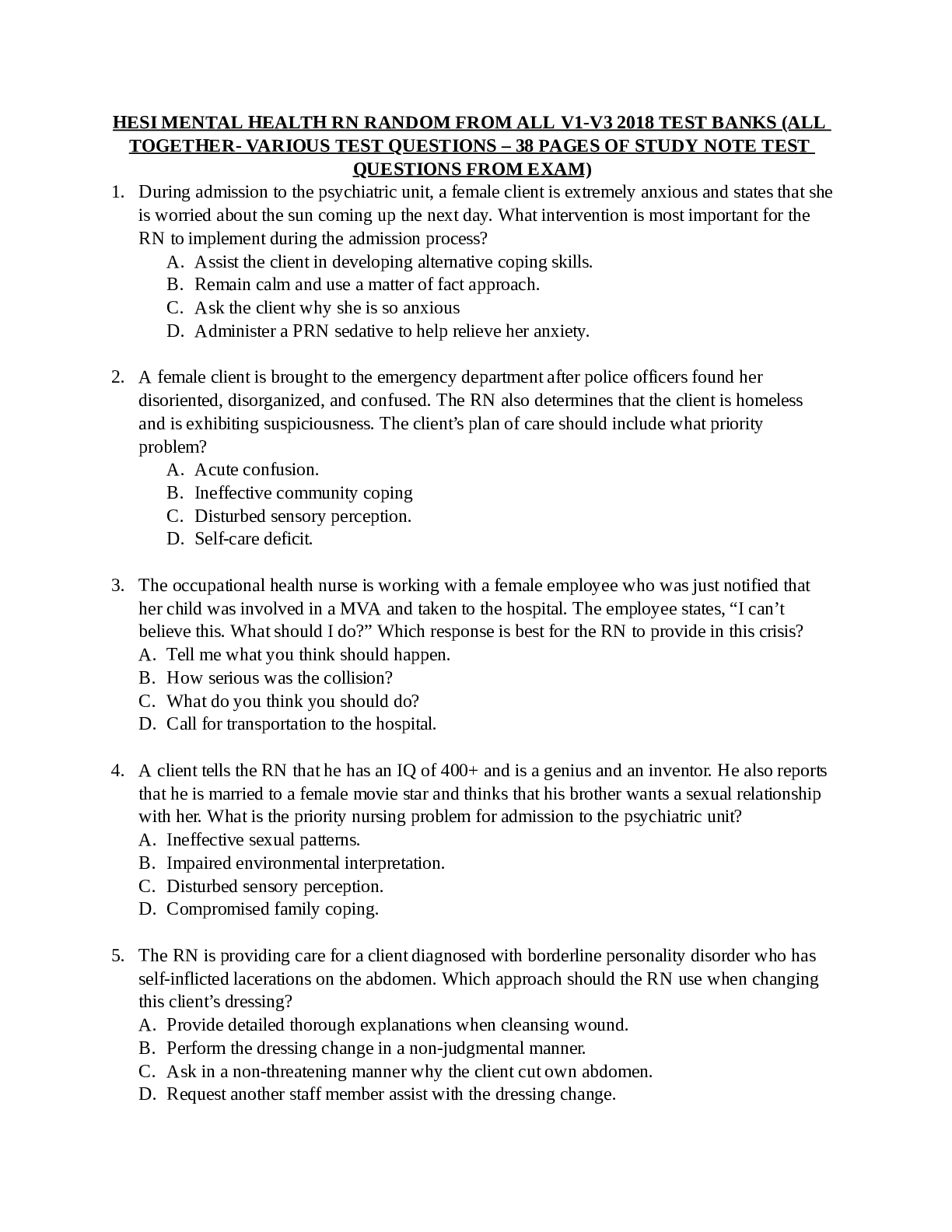

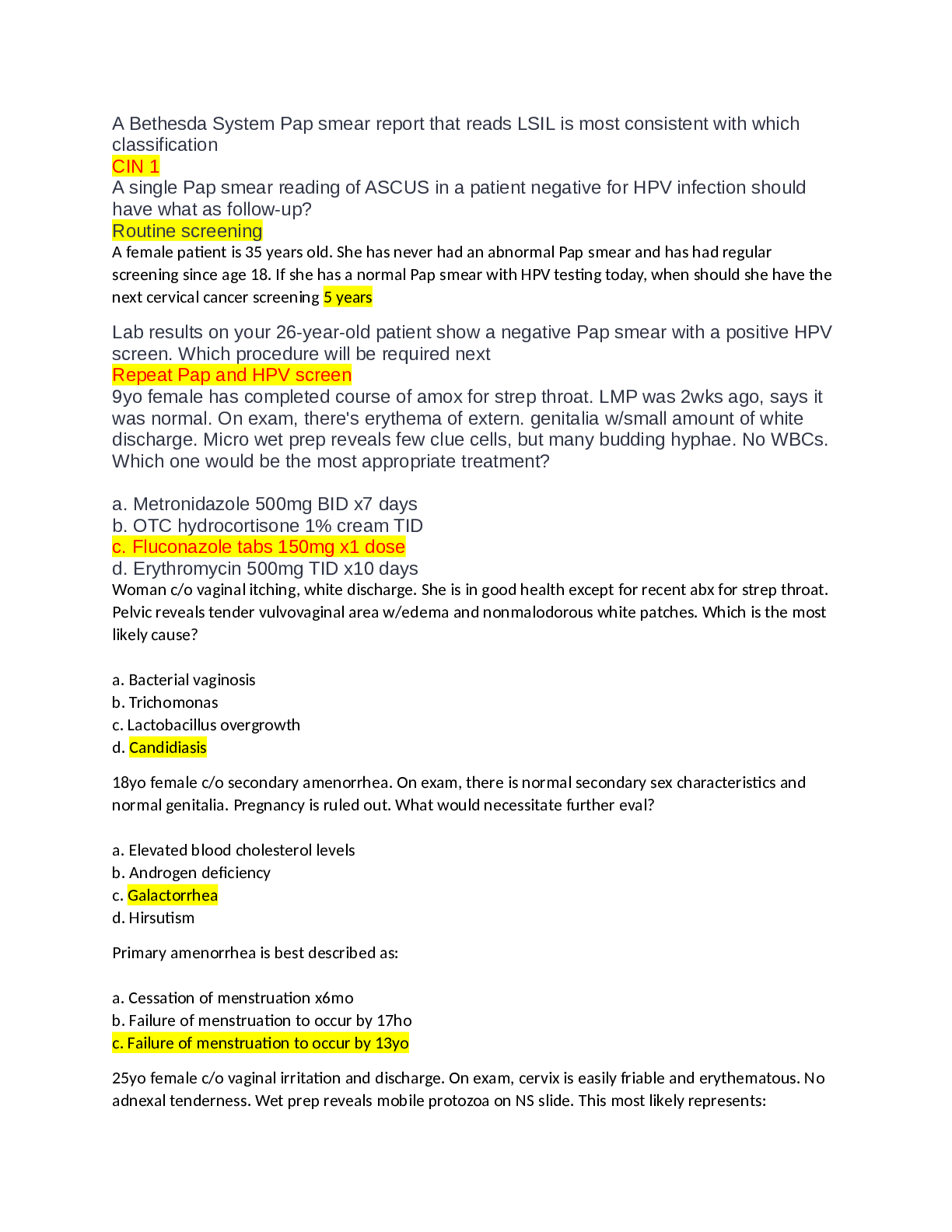

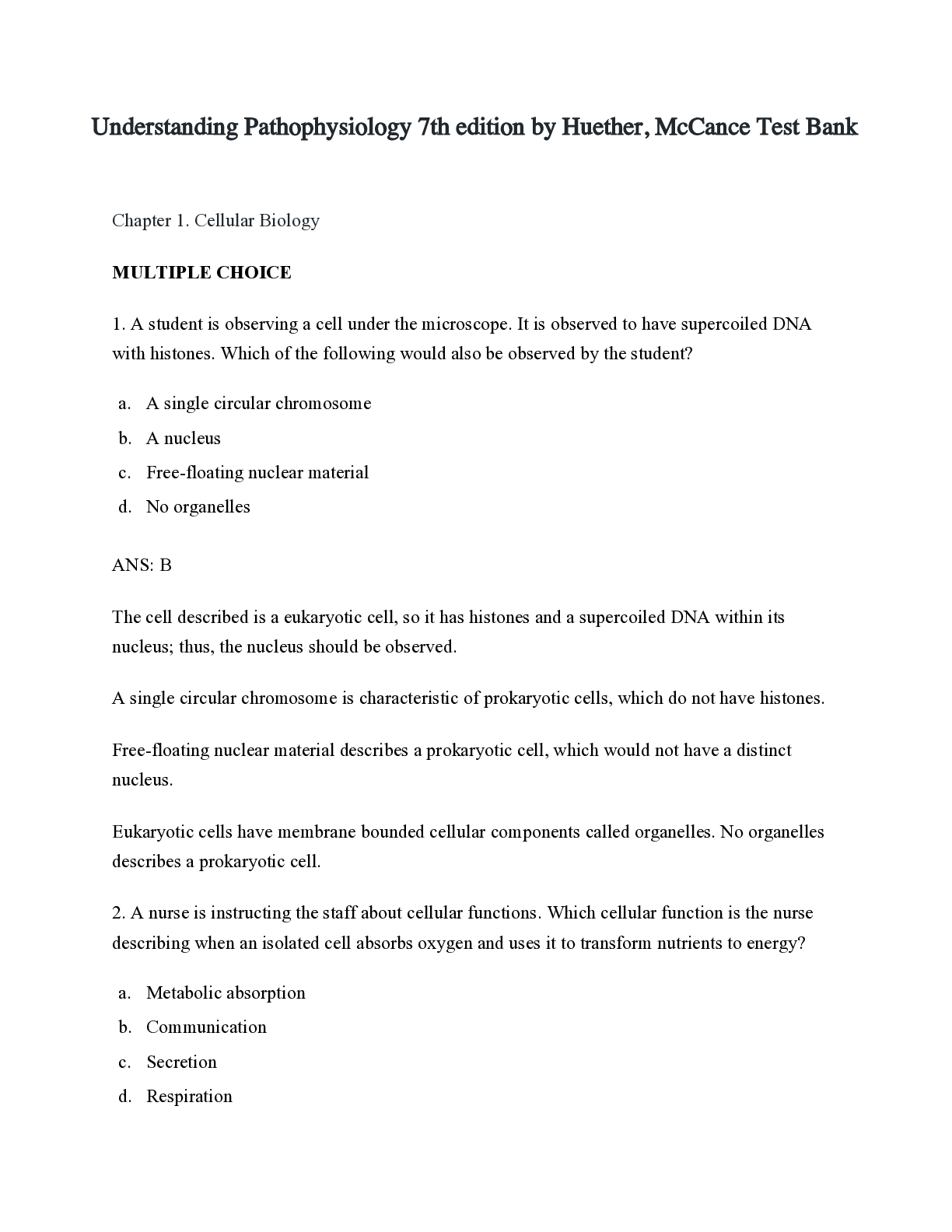
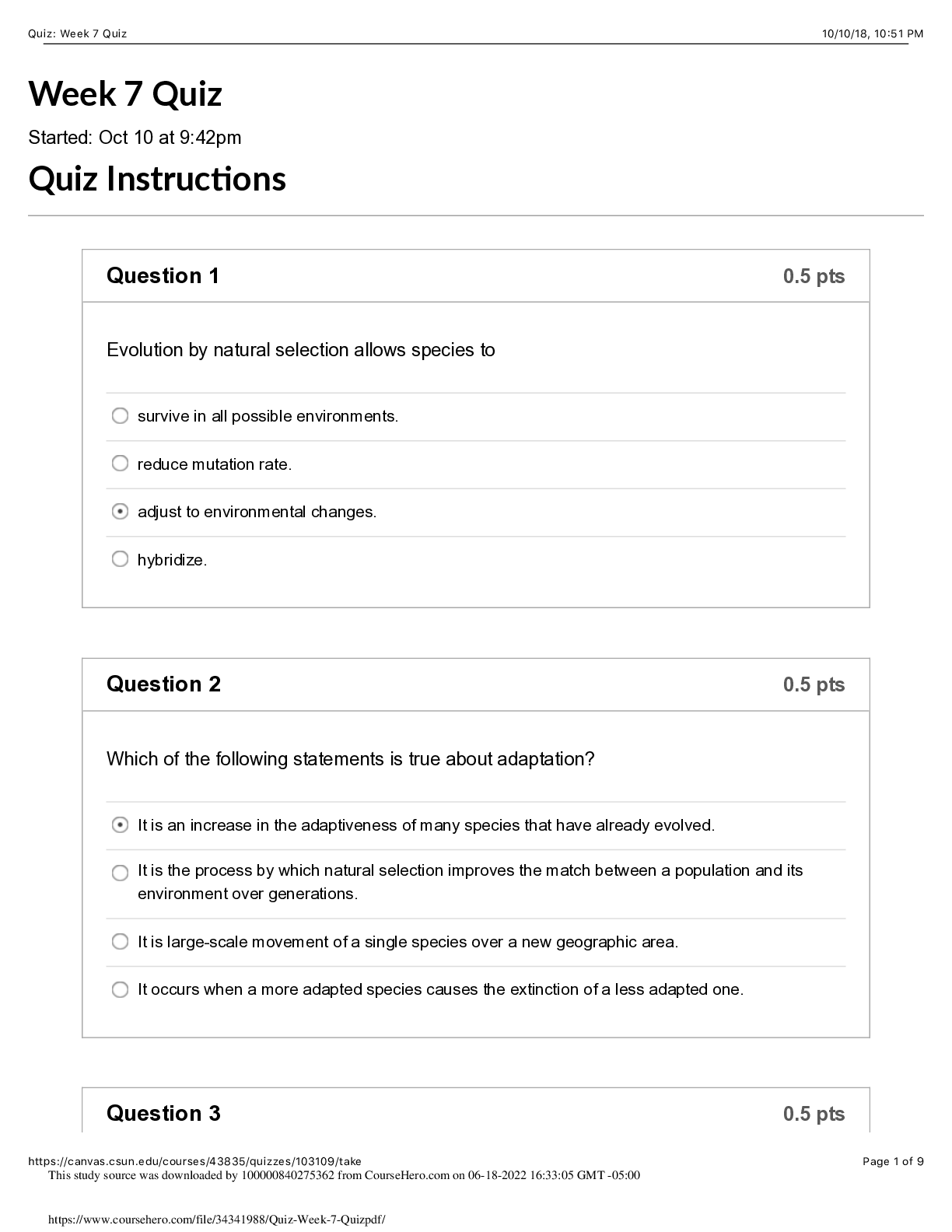
.png)

